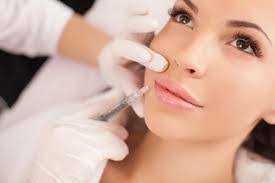
We all know how Botox can improve wrinkles, but did you know that Botox can be used to reduce the size and force of your masseter muscles? This can create a leaner appearance of your jawline while reducing bruxism. Bruxing, or grinding your teeth, can be controlled with the use of Botox, in conjunction with night guards.
Botox therapy is also applicable to treating pain from TMJ, myofascial pain, and trigger points.
Botox is a cosmetic injectable treatment derived from botulinum toxin type A. It is commonly used to reduce the appearance of wrinkles and fine lines by temporarily paralyzing the muscles that cause them.
Botox works by blocking signals from the nerves to the muscles, preventing them from contracting. This results in a temporary reduction in muscle activity, smoothing out wrinkles and lines on the skin.
Botox is commonly used to treat wrinkles and lines on the forehead, between the eyebrows (glabellar lines), and around the eyes (crow's feet). It can also be used to lift the eyebrows, reduce bunny lines on the nose, and soften the appearance of a gummy smile.
When administered by a trained and qualified medical professional, Botox is considered safe for most individuals. However, like any medical treatment, there are potential risks and side effects, which will be discussed during the consultation.
The effects of Botox typically last between 3 to 6 months, depending on the individual's metabolism and the treated area. To maintain the results, follow-up treatments are usually recommended.
Botox injections are minimally invasive and require no downtime. Most individuals can resume their normal activities immediately after treatment. However, it's essential to avoid rubbing or massaging the treated area for the first 24 hours.
Botox injections are generally well-tolerated and cause minimal discomfort. Some individuals may experience a slight pinching sensation or mild discomfort during the injections, but it is usually brief and tolerable.
While some individuals may begin to see improvements within a few days, the full effects of Botox usually become apparent within 1 to 2 weeks after treatment.
Common side effects of Botox injections include temporary redness, swelling, bruising, and mild pain at the injection sites. These side effects typically resolve within a few days.
Good candidates for Botox injections are generally healthy individuals who are bothered by the appearance of wrinkles and lines on their face. It is essential to discuss your medical history and aesthetic goals with a qualified provider to determine if Botox is right for you.
Yes, Botox can be combined with other cosmetic treatments such as dermal fillers, chemical peels, and laser skin resurfacing to achieve comprehensive facial rejuvenation. Your provider will customize a treatment plan based on your unique needs and goals.
The cost of Botox injections varies depending on factors such as the number of treatment areas, the amount of product used, and the expertise of the provider. During your consultation, you will receive a personalized quote based on your treatment plan.
It is generally not recommended to undergo Botox injections while pregnant or breastfeeding, as the effects on the fetus or infant are not well-studied. It's essential to discuss any concerns with your healthcare provider.
Botox injections can be safely repeated every 3 to 6 months to maintain the desired results. Your provider will recommend a treatment schedule based on your individual response to the injections and aesthetic goals.
Our goal is to help every patient experience the benefits of good oral health and a beautiful smile. We value the trust you have placed in our office and strive to provide solutions that meet your dental needs and expectations of care.
